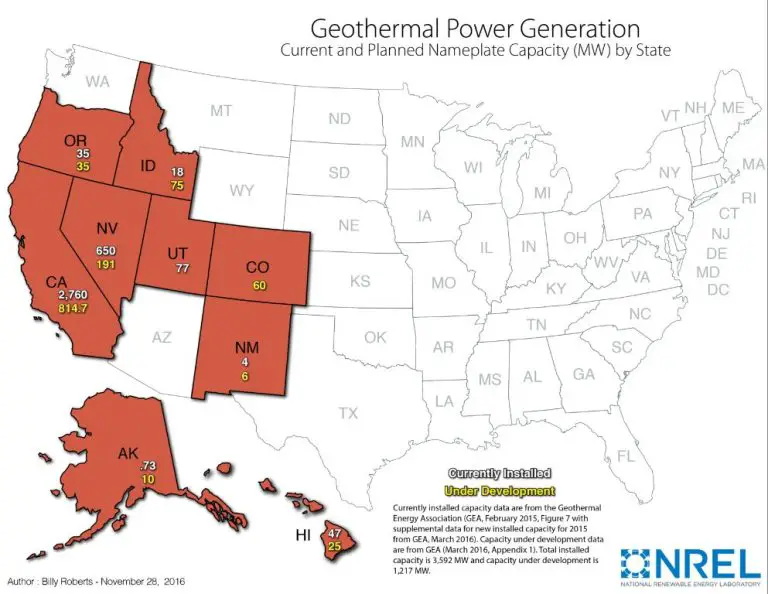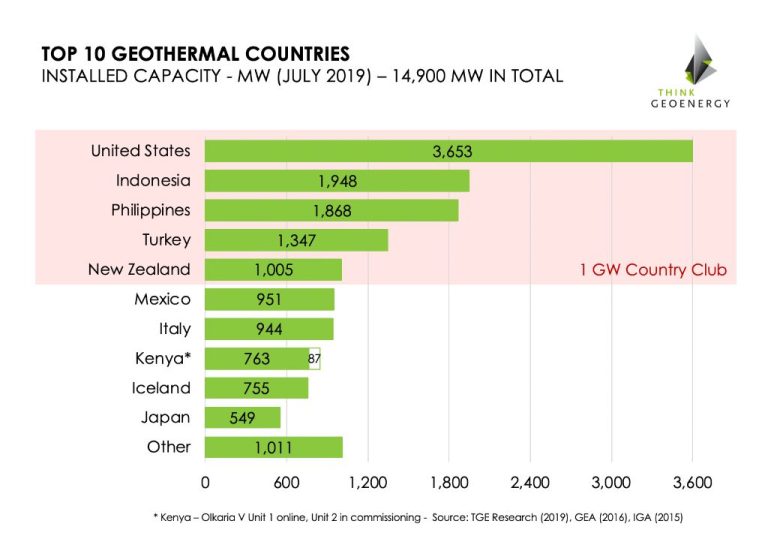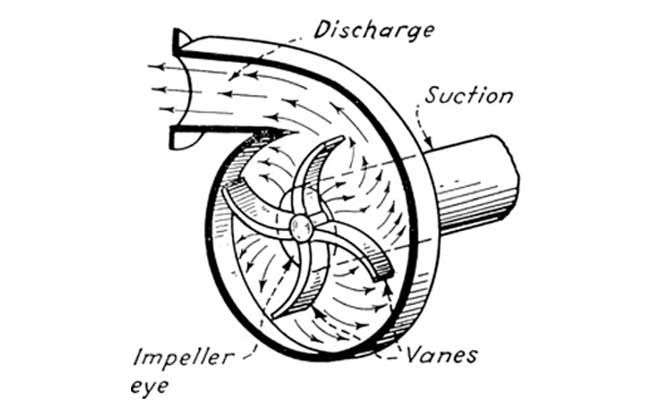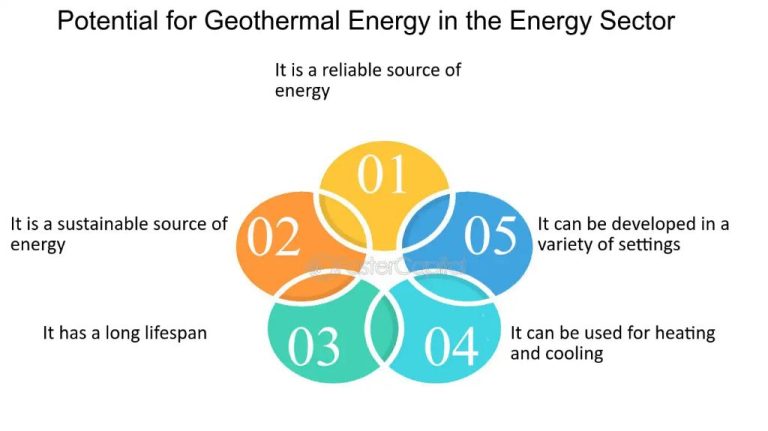Geothermal Power: Assessing Long-Term Environmental Viability
Geothermal energy is thermal energy generated and stored in the Earth. It is one of the few renewable energy sources that provides constant and stable baseload power, independent of weather conditions and time of day. Geothermal energy comes from the immense heat inside the Earth that has been generated over millions of years from radioactive decay and continual core heat loss. The word “geothermal” comes from the Greek words “geo” (earth) and “therme” (heat).
People have utilized geothermal energy for millennia for bathing, cooking, and heating. The first industrial uses of geothermal energy date back to the late 19th century, when hot springs were used for spas and greenhouses. In 1904, the first geothermal power plant was built in Tuscany, Italy to generate electricity. However, large scale geothermal power production did not begin until the 1950s and 1960s in New Zealand and the western United States. Today, geothermal energy is used commercially in over 24 countries for electricity production, direct heating, greenhouse heating, aquaculture, and industrial applications.
Geothermal Power Generation Methods
There are three main types of geothermal power plants used for electricity generation: dry steam, flash steam, and binary cycle. Each type harnesses geothermal energy in slightly different ways.
Dry steam plants utilize hydrothermal fluids that are primarily steam. The steam from the geothermal reservoir rises directly through wells to turn turbine generators and produce electricity. This is the oldest and simplest generation method.
Flash steam plants are the most common. They use geothermal fluids above 182°C that consist of water and steam. The steam is separated from the water and used to power turbine generators while the remaining hot water is injected back into the reservoir.
Binary cycle plants operate on lower temperature hydrothermal fluids between 107-182°C. The hot water is passed through a heat exchanger where it heats a secondary fluid with a much lower boiling point. This causes the secondary fluid to turn to vapor which then drives the turbine generators.
Each geothermal power plant is designed and engineered based on the unique geological conditions of the reservoir. The type of technology utilized depends on the temperature, depth, and pumping needs of the site.
Global Geothermal Resources
Many parts of the world have high geothermal resource potential. The most favorable locations are usually found along major plate boundaries where volcanic and seismic activity concentrates heat closer to the surface. According to assessments by the U.S. Geological Survey (USGS), the following countries and regions have substantial conventional hydrothermal resources for electricity generation:
- Western United States
- Alaska
- Central America
- Caribbean
- Iceland
- East Africa
- Indonesia
- Philippines
- Japan
- New Zealand
There is an estimated total worldwide hydrothermal electricity generation potential of about 200 gigawatts (GW). Additionally, enhanced geothermal systems could provide an estimated 100-500 GW of generating capacity globally. With further technological improvements, the theoretical geothermal electricity generation potential could be over 2,000 GW according to some estimates.
Environmental Benefits
Geothermal power offers significant environmental benefits compared to conventional fossil fuel power plants. The most notable advantage is extremely low emissions. Geothermal plants emit on average just 5% of the carbon dioxide of a coal plant per kWh, and 7% of a natural gas plant. Unlike wind and solar power which produce no emissions but require mining for materials, geothermal uses existing heat beneath the earth’s surface and thus does not require any fuel.
Geothermal electricity generation also has a tiny land footprint compared to other energy sources. Solar and wind farms can cover many square miles, while a geothermal plant typically uses less than a square mile for the power facilities. And because geothermal reservoirs are deep underground, the land above them can still be utilized for other purposes like agriculture.
Environmental Challenges
While geothermal power offers many environmental benefits over fossil fuel-based energy sources, it also presents some notable environmental challenges that must be responsibly managed for long-term sustainability.
One key environmental challenge of geothermal power is its intensive use of water resources. Geothermal plants require water for drilling, power plant cooling systems, and injection back into reservoirs to maintain pressure. This can put strain on local water supplies, especially in arid regions. Careful site selection, conservation efforts, and usage of alternative cooling methods can help mitigate impacts on water resources.
Induced seismicity is another environmental concern. While relatively low-level, pumping water into reservoirs has been linked to increased seismic activity in some regions. Ongoing monitoring and managing injection rates can help control seismic risks associated with geothermal development.
Heat pollution is an additional issue, as disposing of hot wastewater from plants can raise temperatures in local surface waters. Proper wastewater management through cooling towers, ponds, or injection wells helps prevent thermal pollution of waterways and aquatic ecosystems.
Overall, while geothermal offers a relatively clean energy source, responsible management of water use, seismic activity, heat waste, and other environmental factors is essential to ensure its long-term sustainability and minimal ecological impact.
Water Usage and Conservation
Geothermal power plants require significant amounts of water for cooling and operations. On average, geothermal plants use about 20 gallons of water per kWh produced, compared to nuclear at 25 gallons/kWh, coal at 22 gallons/kWh, and natural gas at 7 gallons/kWh.
While geothermal’s water usage is higher than some alternatives, there are ways to minimize and recycle water usage at plants:
- Using advanced cooling tower systems and dry cooling technology to reduce evaporation
- Capturing and treating geothermal fluids for reuse rather than surface discharge
- Using lower-quality greywater or treated wastewater for cooling instead of freshwater sources
- Implementing zero liquid discharge systems to recycle 100% of water
Proper siting of geothermal plants is also key – areas with plentiful water supplies are ideal. With smart water management and conservation practices, geothermal can utilize water in a sustainable manner for power generation.
Managing Seismic Risk
One of the key environmental challenges of geothermal power is the potential for induced seismicity from extraction or injection of geothermal fluids. While low levels of seismic activity are common near geothermal plants, larger events can occasionally occur if operations are not carefully monitored and managed. This highlights the importance of real-time seismic monitoring and mitigation protocols for geothermal operators.
Many geothermal plants have installed local seismic networks to detect small micro-earthquakes that could signal developing instabilities. Data from these sensors is fed into traffic light systems that dictate operational protocols based on measured seismicity. Green light indicates normal operations during low background seismicity. Yellow light may require reductions in pumping or injection rates to curb increasing micro-earthquakes. Red light would necessitate a plant shutdown if a larger seismic event is triggered or seismic risks become too high.
With careful monitoring and traffic light systems, geothermal operators can modulate operations to control seismic risks. However, induced seismicity remains an environmental challenge requiring extensive seismic networks, real-time data analysis, and development of best practices for mitigation. Responsible management of seismicity will be crucial for geothermal power to expand sustainably long-term.
Sustainable Development
As geothermal power continues to expand globally, following sustainable development practices is crucial for minimizing environmental impacts. Site selection and assessment processes should account for sustainability from the initial planning stages.
Best practices include conducting comprehensive environmental impact assessments for proposed geothermal plants, and comparing potential sites to identify ones with the lowest biodiversity risks. Impact assessments should evaluate effects on land use, wildlife, water resources, air quality, and more. Ongoing monitoring programs can track impacts during construction and operation.
Developers should preferentially pursue projects in areas with existing geothermal industrial activity over pristine sites. Strategically designing infrastructure, like pipelines and roads, to limit habitat fragmentation and disturbance is also recommended. Complying with all applicable regulations and permitting requirements provides a baseline level of environmental protection.
Overall, the geothermal industry should take a stewardship approach by adopting site-specific mitigation strategies, offsetting unavoidable impacts, collaborating with stakeholders, and advancing technologies to increase sustainability.
Financial Costs
The upfront costs associated with geothermal power can be significant. The largest expense is usually drilling, which can account for up to half of the total costs for a geothermal power project. Drilling geothermal wells thousands of feet into the earth’s crust is technologically challenging and expensive. However, over the lifetime of a geothermal power plant, the drilling costs are usually recouped through energy production.
When comparing lifetime costs, geothermal power is cost competitive with conventional power generation methods. Geothermal plants have substantially lower fuel costs compared to fossil fuel plants because the earth’s natural heat is used rather than having to continually purchase fuel. Geothermal plants also have lower operational costs than other renewable energy sources like solar or wind that rely on the intermittent availability of sunlight or wind. The capacity factors of geothermal plants are higher as well, usually exceeding 90%, meaning they can generate constant baseload power around the clock.
While geothermal power requires high upfront capital costs for drilling and construction, the plants have long operating lifetimes of 20-30 years to spread these costs over. When factoring in the minimal fuel and operating costs, geothermal energy can provide electricity at good value over the full lifespan of a plant.
Future Outlook
The future looks bright for the continued growth and development of geothermal power. As climate change concerns mount and countries seek out renewable energy sources, geothermal is poised to play a major role given its proven track record and vast potential. According to forecasts, global geothermal power capacity could grow by over 2600% by 2050 if countries markedly increase their investments and policy support.
Several factors point towards strong growth potential for geothermal energy. Firstly, only a small fraction of identified global geothermal resources have been utilized so far, highlighting massive room for expansion. Secondly, as technology improves, previously unviable locations and resources will become accessible, opening up new frontiers for geothermal development. Enhanced geothermal systems (EGS) in particular could be a game changer, allowing geothermal plants to be built almost anywhere.
Lastly, the modularity and flexibility of geothermal lends itself well to distributed power generation models and off-grid applications for rural electrification in developing countries. Small-scale geothermal systems can provide affordable and reliable energy access. With increased financing and infrastructure development, geothermal energy could empower millions lacking basic energy services.






